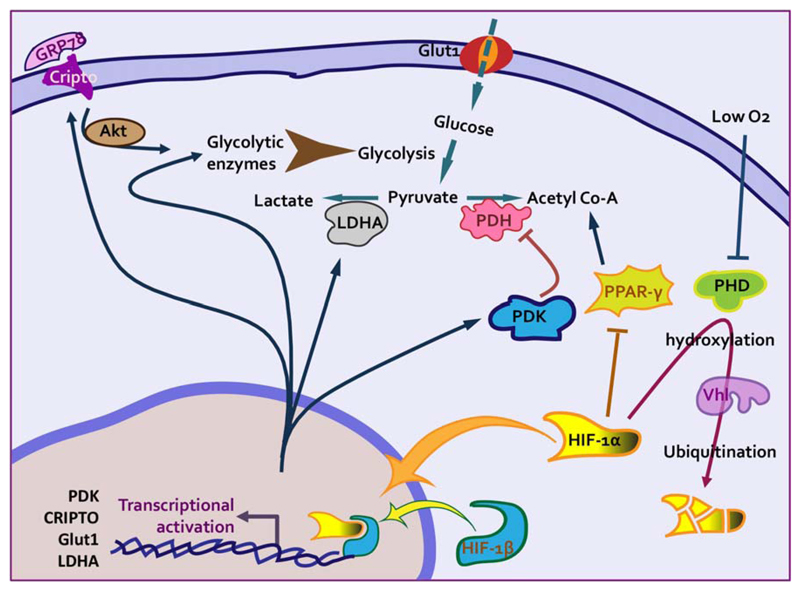Fig 2.
Hypoxic pathways regulate quiescence of adult hematopoietic stem cells. In adult BM, HSCs have been shown to reside in hypoxic niches. This has been considered as the key factor that determines energy production pathways employed by these cells. O2 levels are sensed by the cells through activity of prolyl hydroxylase domain-containing proteins (PHDs), which degrade HIF1α through VHL ubiquitination pathway. As a consequence of hypoxic niche, HIF-1α gets stabilized causing transcriptional activation of several regulators of anaerobic energy production pathways. HIF target Ldha leads to increased lactate production, which is reflected in elevated extracellular acidification rate in primitive HSCs. In addition, hypoxic response of the cells inhibits several of the pathways key for oxidative mitochondrial pathways such as acetyl co-A production via fatty acid oxidation or by PDH activity. Through multiple mechanisms, including activation of key enzymes, Akt pathway enables glycolytic pathways in HSCs.

